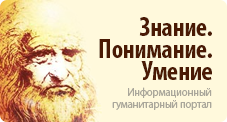Prof. A. I. Kovaleva
Dr. Sc (Sociology),
Moscow University for the Humanities
One specific feature of the social status of youth is their given, determined position related to social designing of youth as a social reality. Predominantly, youth is endowed with given predispositions to realize some or other social practices. Such predispositions are predetermined by objective social conditions and reflect the active presence of one’s previous experience, behavior stereotypes and world-views handed over by the previous generations, that is, the phenomena which permit youth to reproduce the previous social experience.
The pre-assigned component dominates in the social status of youth. However, this is just one side of it. The other side of youth’s social status is its dynamic and perspective character, the main precondition of which is intensive social mobility, which is predominantly positive and which permits young people to complete acquisition of subjectivity and form a whole identity.
The educational status of youth is an important component of their social status. Education gives the status a new potential and perspective. It facilitates acquisition by the young of dispositions which enable them not only to reproduce their social experience, but also to actively change and transform it and think freely.
The 1990s saw some contradictory tendencies in Russian youth education. It should be noted; first of all, increasingly greater numbers of teenagers tend to drop out for various, including material, reasons. According to the State Duma, about two million school-age teenagers are now outside the education system. At the same time, the greatest majority of youth is now turning to getting education. In the system of higher learning, this rise is significant. The number of institutions of higher learning has grown markedly, as well as the number of their students.
Therefore, the traditional parameters of youth’s educational status — realization of one is right to education (availability, charge-free), share of students in рорulation, material and technical base, teaching personnel, ratio of the level of youth education to that of other age groups n do not give the full picture of this status
What is going on? In fact, youth is educational status, as well as other social phenomena, are now influenced by instability and diffuse character of the present- day Russian society, which includes the signs of various social types, varying from traditional to post-industrial.
The educational status of the present-day Russian youth cannot be explained by quantitative indicators alone. The most important indicators are now educational trajectories and situations of individual young people or status groups of the young population.
Correlation between youth educational status and that of other age groups, comparison of its parameters with youth is status in the late 1980s shows that today it is very difficult to assess definitely what looks better or worse in the status characteristics.
The general tendency is that previously typical indicators of the educational level among young people have, at present, a greater distance between the upper and lower boundaries. For instance, some cases of illiteracy among Russian teenagers have been recorded. At the same time, there are advanced groups of highly computer-minded young people.
According to our studies, the prevailing guideline of youth to get a higher education has remained unchanged over many years. At the same time, one should mention that there are now narrowed opportunities to realize it. The progressing polarization of the society has its effect on differentiation of educational trajectories, first of all as regards economic and territorial factors.
The selective role of the system of higher learning is increasing. First, opportunities of school-leavers with various levels of knowledge and abilities to enter a institution of higher learning are being equalized, but higher education is becoming less available for non-urban dwellers, for those who cannot be supported materially, or earn money independently in a part-time job. Second, expansion of paid educational services at all stages leads to concentration of children from well-off families in prestigious spheres of economy and social life. Thirdly, there is a trend 0f social differentiation of youth as regards a lesser level of education in certain territorial groups. A sharp drop is also noted among school-graduates from rural areas to enter vocational schools and institutes of higher learning in agricultural majors. This can lead to a decreased proportion of intellectuals in rural areas and, consequently, certain losses in spiritual aspects and technical level of agricultural production.
The educational status of youth does not meet the needs of the job market. There is a problem of discord between professional preferences of young people and employers need in such profession. According to the State Report to the Government of the Russian Federation, 3/5 of the graduates of institutions of higher learning and are of the graduates of vocational schools are employed in specialties other than they have been trained. Competitiveness of young specialists has dropped drastically. For instance, recruitment advertisements easily convince that having computer skills is the necessary precondition for getting a decent job, but this is not the case for a significant share of graduates. At the same time, researchers point out that youngsters desire to study at “difficult” institutes for the sake of getting a competitive professional education is growing.
For most of the urban school-leavers, die orientation to continuation of education is combined with increased claims for future managerial status. Researchers found out that in 1985-1995 such claims moved from managing a small group, or become a mid-manager, to much higher managerial levels. Moreover, the school-levels assumptions as to how they might get it have also changed.
Society is low demand for one is education and knowledge and a salary gap between intellectuals and other population groups have lead to a situation in which for most young people education is not longer a guarantee of success, but just a verbal-level value without adequate motivation for knowledge. For some of young people, a kind of activity or profession, which provide a substantial and quick remuneration, seems to be more attractive. To be “business-like” and “entrepreneurial”, that is, to hustle and find useful connections, is much more prestigious.
Young people of Russia facing global challenges at the turn of the centuries the 90s, will soon join the national economy. After some time, it will be possible to draw certain conclusions about positive and negative aspects of this training. It could be suggested, that most of young people will demonstrate a rather high adaptability and professional mobility, while, at the same time, some part of youth will never be successful, or even be able to adapt in society. It could also be suggested that some areas of professional activity (business, law and trade) will be provided better, but there will be a qualification gap among those w7orking in manufacturing and agriculture. Also, there will be a continuity gap in training engineering personnel, in the field of natural sciences and hi-tech, which, certainly, will complicate the situation both in manufacturing and in society, spiritual life.
Many contradictions have formed in society as regards to the problem of youth education. Among them, there are contradictions between realization one’s constitutional right to education and its limitation tendencies; between ever-expanding opportunities in providing educational services and the threat of their low qualities; between the remaining desire of youth to get higher education and decreased motivation to more knowledge; between the prestige of various professions and demand for manpower in certain professions, etc.
In order to raise youth is educational status it is essential both to overcome above contradictions and strengthen the governments! social policy aimed at making the system of education a priority social task.
Source: Молодежь России перед лицом глобальных вызовов на рубеже веков (Как противостоять агрессивному экстремизму, ксенофобии и насилию среди молодежи) : Материалы Международной конференции, 18–19 ноября 2000 г., Москва, Россия / под научной и общей редакцией И. М. Ильинского. Перевод на англ. яз. М., 2001. С. 139–142. ISBN 5-85085-643-9.




